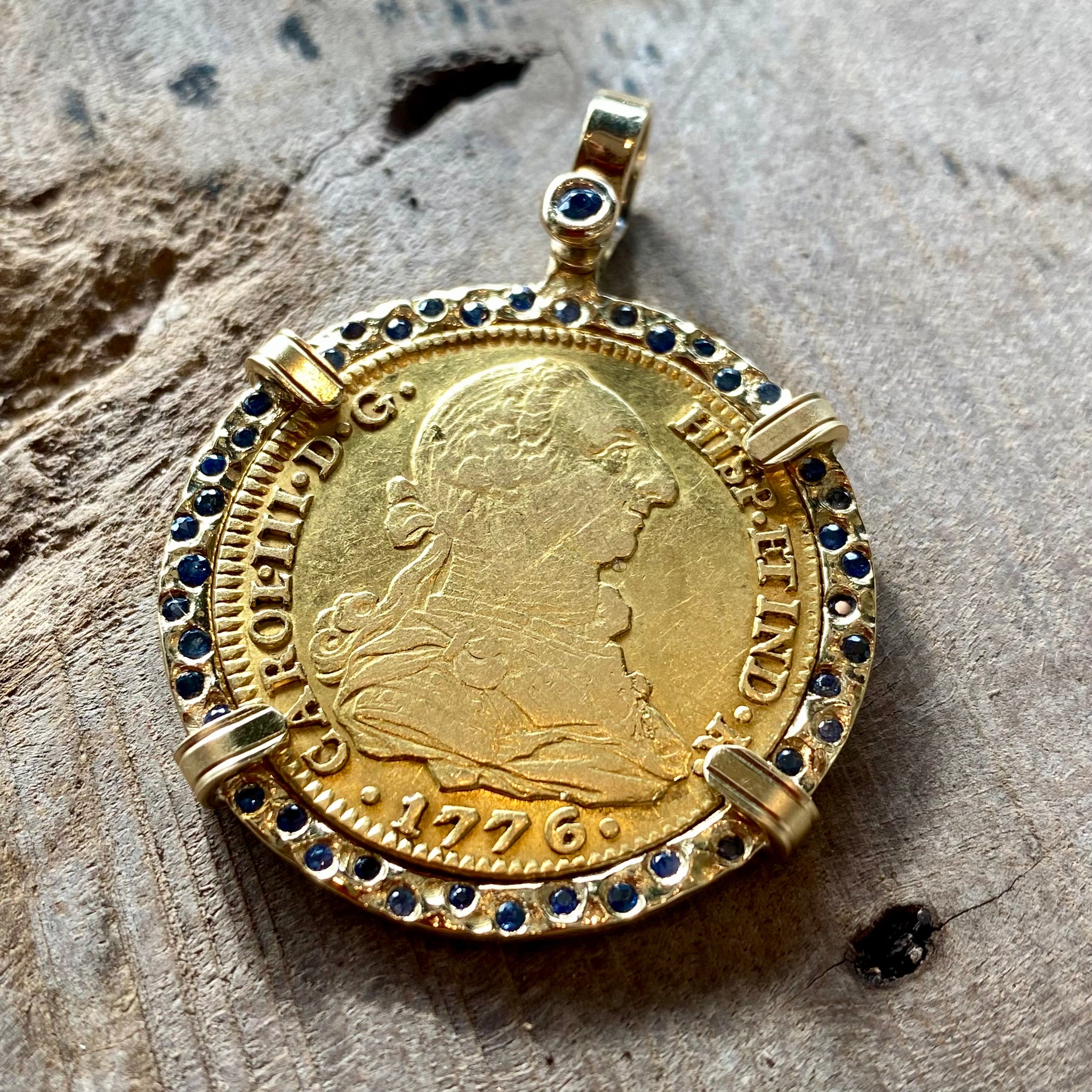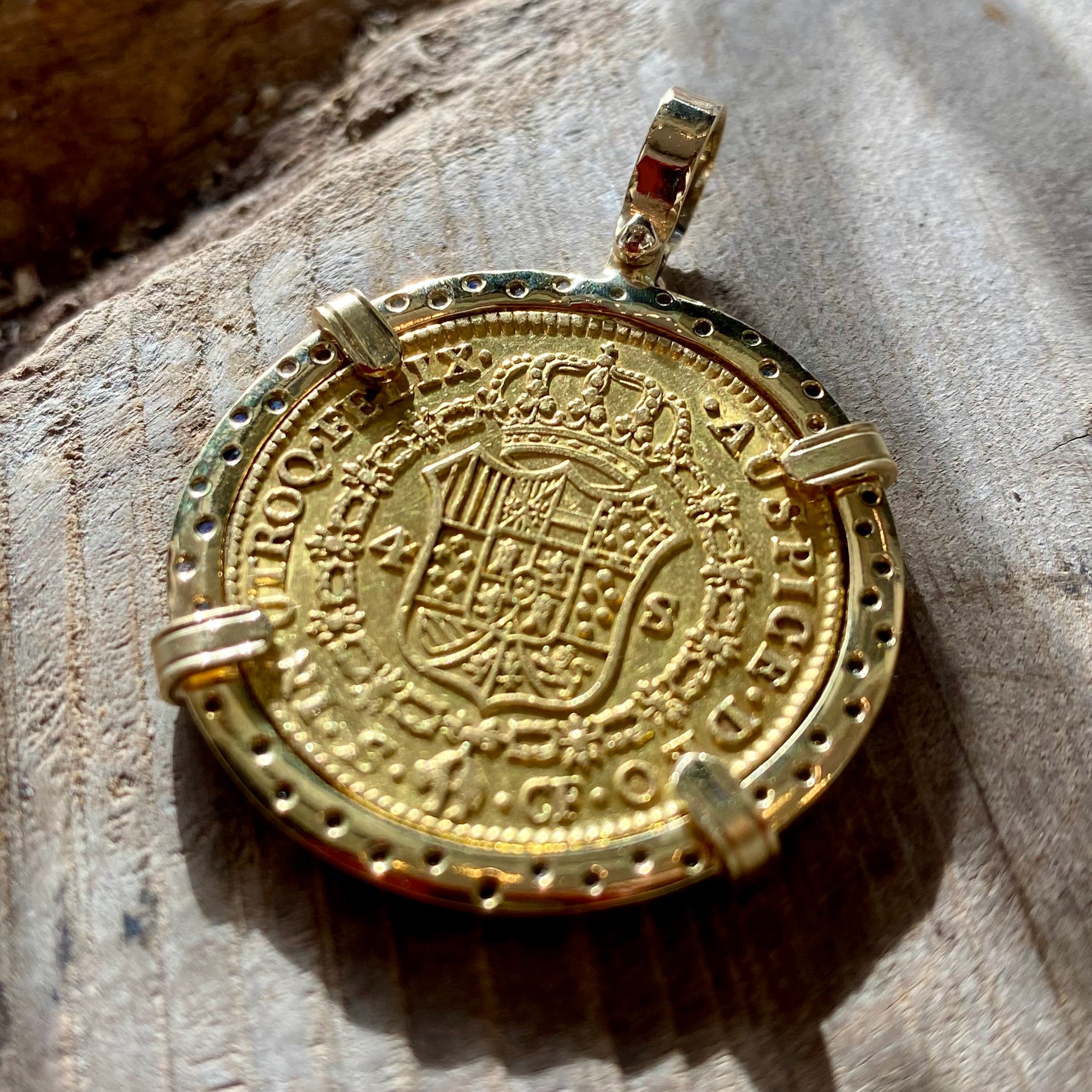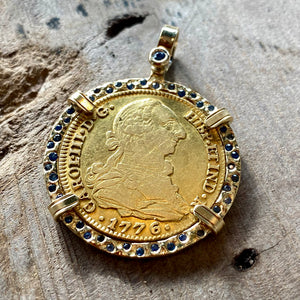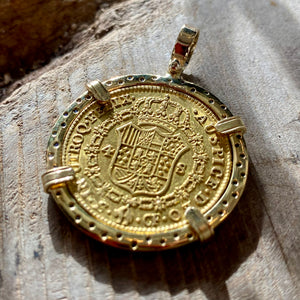Spanish gold coin - 4 Escudos - Dated 1776 - Seville Mint
$8,838
Denomination: 4 Escudos Reign: Carlos III
Date: 1776 Weight: 13.29g
Mint: Seville, Spain. Assayer: "CF" (1772-1781)
Mount: 18K gold with 42 inlaid Sapphires.
Grade: NGC 6680207-015 – AU details
Description: Obverse: Bust of Carlos III surrounded by legend. Date below. Latin inscription “CAROL·III· D·G·” and “HISP· ET IND·R·”. 1776. Translation: “Carlos III by the Grace of God King of Spain and the Indies”. Reverse: Coat of arms, with Order chain surrounded by legend. Latin inscription “·IN·UTROQ·FELIX· ·AUSPICE·DEO·4 SP· ·CF”. Translation: “In one and the other world happy under God's eye”.
History: The Seville Mint (Spanish: Casa de la Moneda de Sevilla) was one of the seven main mints of Castile authorized to continue after 1497 by the Catholic monarchs, the rest being closed. The earliest coins minted in Seville date back to Roman times, around 15 B.C. Later, the Visigoths minted from the year 621, the Arabs after 1060, and the Christian kings from 1252. The New Mint was built in the Atarazanas orchards, next to the river and a few steps from where the colonial fleets arrived with the metals. During the reign of Felipe II, the House of Seville processed 72% of all the silver, and 87% of all the gold minted in the Iberian Peninsula, leaving the other mints almost without work.
The Ordinance of 1730 for the centralization of mints eliminated all except those of Madrid and Seville, which would mint only silver and gold, and Segovia, which would be dedicated to striking copper coins. In 1855, a new and large mint was planned in Madrid, leading to the closure of the others. In 1861 the new Madrid factory was inaugurated and in 1869 the houses of Seville, Segovia and Jubia were closed, their equipment being sold at public auction. The House of Seville was divided into three parts and sold in 1870; a total of more than ten thousand square meters sold for about 244 thousand escudos.
2863032-007




